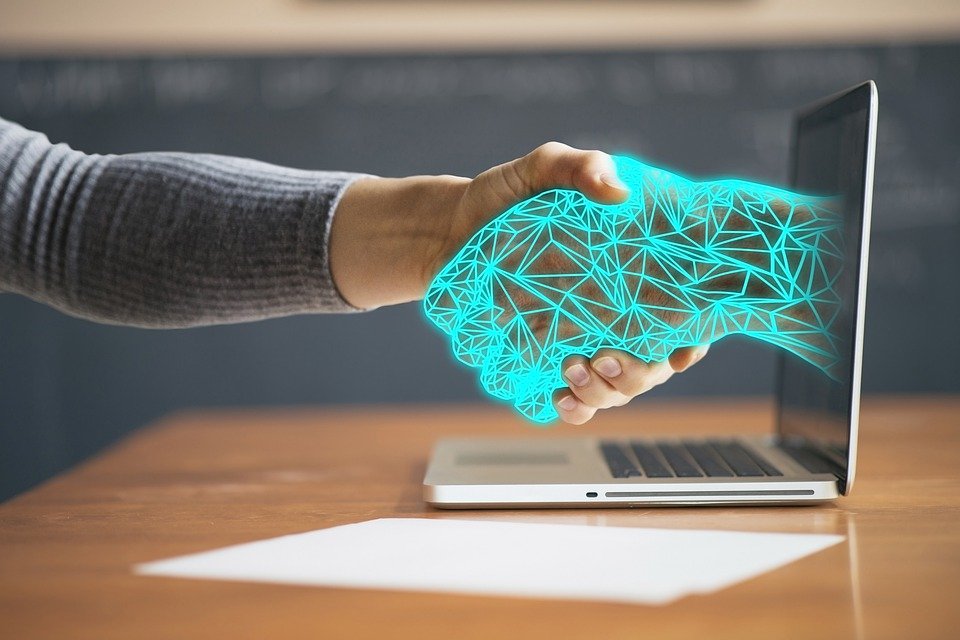We are experiencing a vast digital revolution worldwide. Innovation, agility, and market development are all being accelerated by technology. Businesses are redefining their activities by integrating AI, Blockchain, and machine learning technologies. The Covid-19 pandemic prompted rapid digitization and automation, allowing companies to remain resilient in the face of adversity.
To keep up with the changing pace, many businesses adopted disruptive technologies and modified their business models.
The pandemic’s effect will last a long time, and the digital transition is here to stay. If businesses do not keep up with technological developments, it will be challenging to move past the flaw. Let’s look at some technology developments so that everyone knows what to look for, embrace, and bring with them.
Advanced technology will continue to change our lives and the way we operate, opening enormous opportunities for businesses all over the world. The top five technology trends for 2021 are listed below.
1. Cybersecurity Mesh
While digital transformation will improve business performance, it will also pose cybersecurity risks. The escalating cyber-threats must be tackled with critical strategies. Cybersecurity mesh is a new trend that addresses current cybersecurity needs in both physical and virtual environments.
It offers a distributed, decentralized infrastructure that can create a security perimeter around each user or person within the network. You can improve the security of any location that houses your main properties, staff, or devices with cybersecurity mesh.
This approach allows for the centralization of security policies while also allowing for distributed compliance. Cybersecurity mesh can benefit the existing remote working environment greatly. It will ensure that the right people have access to information and will be able to detect cyber threats and breaches better than an on-premises security system.
2. The blockchain technology
The first thing that comes to mind when we hear the word blockchain is cryptocurrencies, including Bitcoin. Yes, they provide a decentralized storage and transaction platform for digital currencies. However, by removing centralized control and third-party intervention, they allow various sectors in storage and transactions.
Healthcare, fintech, banking, e-commerce, and other booming industries will all benefit from blockchain. Distributed Finance is a new trend in banking that is being driven by blockchain technology.
It ensures that digital transactions are transparent without jeopardizing protection. Another essential function of blockchain in the industry is the development of traceable and open supply chains.
3. Hybrid Clouds
Cloud-based applications have improved business productivity by allowing data to be accessed and scaled from any location at any time. By integrating public, private cloud services, and on-premises proprietary systems, hybrid clouds can improve the user experience.
In 2021, we’ll see a surge in the adoption of hybrid clouds. The capacity of hybrid clouds to share data while still securing it in private and on-premises networks would help businesses run more efficiently.
4. Edge Computing
The ever-increasing volume of data necessitates the use of reliable and smooth computing techniques. Cloud computing is a typical data analysis and processing method. On the other hand, companies are increasingly moving into the edge movement.
1 Edge computing is a current technology trend that guarantees low latency and fast data processing speeds. Edge computing allows computations to be performed closer to data storage systems, improving application performance.
The high latency costs of cloud platforms can be a motivator for edge computing adoption.
5. Artificial Intelligence
Artificial Intelligence is never old, and it is still improving in order to achieve new capabilities. In the coming years, AI can improve market forecasts, sentiment analysis, and industrial automation. In most businesses, automation is now a requirement.
It’s easier to grasp consumer patterns and behaviour with AI. Given our increasing reliance on AI, the future looks bright. Growth in the AI market would increase job prospects in various sectors and pave the way for new technologies.
During the pandemic, AI stimulated many industries, particularly healthcare and pharmaceuticals. Revolutionary changes in AI will occur in the coming years as debates take place in ethical AI, green AI, emotional AI, and many other fields.
6. Robotics Process Automation
The Robotics Process Automation offers automation strategies for routine and mundane activities accurately and adequately. RPA developer, RPA Business Analyst, RPA Consultant, RPA Solution Architect, and RPA Project Manager are the primary positions.
7. Virtual Reality
As virtual reality increases, businesses can now combine a computer world that matches their real-time environment.
Content manufacturer, content writers, product management, software engineering, UI and UX design, and quality assurance are the critical functions.
8. Internet of Things
The Internet of Things (IoT) includes, in a broader context, everything related to the Internet. Modern companies now use IoT to link many devices to the premises.
IoT Software Engineer, System Design Engineer, IoT Product Manager, IoT Research Developer, and IoT Solution Architect are leading positions.
Final Thoughts
I hope you enjoyed my article about trend technology. It’s hard to get a job in this highly competitive IT industry. But if you continue to improve your skills and continue to learn new techniques, you will certainly take up your dream work.
It would help if you searched for institutions that offer your preference. Or, check online for the new technology courses and videos you want to read.
By Abdul Majid Qureshi www.techsaa.com
This is a Contributor Post. Opinions expressed here are opinions of the Contributor. Influencive does not endorse or review brands mentioned; does not and cannot investigate relationships with brands, products, and people mentioned and is up to the Contributor to disclose. Contributors, amongst other accounts and articles may be professional fee-based.

